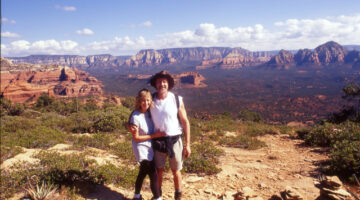Whitewater Draw
Arizona Travel Guide visits the Whitewater Draw Wildlife Area near Douglas in southern Arizona to see its hundreds of sandhill cranes.

Photo (c) Arizona Travel Guide
Whitewater Draw: A Birdwatcher’s Paradise and the Majestic Sandhill Cranes
Located just a short drive from Douglas, Arizona, Whitewater Draw is one of the most spectacular natural attractions in the region. This seasonal wetland, part of the Sulphur Springs Valley, is a critical stopover for migratory birds, most notably the sandhill cranes. Every year, thousands of these majestic birds descend upon Whitewater Draw, creating a breathtaking spectacle that draws birdwatchers, photographers, and nature enthusiasts from across the country.
The Magic of Whitewater Draw
Whitewater Draw is a shallow, marshy area that fills with water during the rainy season, creating an ideal habitat for a variety of wildlife. The draw is part of the Upper San Pedro River Basin and is managed by the Arizona Game and Fish Department as part of the Whitewater Draw Wildlife Area. Its unique ecosystem supports a diverse array of species, making it a hotspot for biodiversity in the arid Southwest.
The area is particularly famous for its role as a wintering ground for sandhill cranes, but it also attracts a wide variety of other birds, including waterfowl, shorebirds, and raptors. The combination of open water, mudflats, and surrounding grasslands provides the perfect environment for these birds to feed, rest, and socialize.
THE SANDHILL CRANES: STARS OF WHITEWATER DRAW
Sandhill cranes are large, elegant birds known for their distinctive calls, graceful movements, and striking appearance. Standing up to 4 feet tall with a wingspan of 6 to 7 feet, these birds are a sight to behold. They have gray plumage, a red crown on their heads, and long, slender legs. Their haunting, trumpet-like calls can be heard from miles away, adding to the magical atmosphere of Whitewater Draw.
Migration Patterns
Sandhill cranes are migratory birds that travel long distances between their breeding and wintering grounds. The population that winters at Whitewater Draw breeds in the northern United States and Canada, particularly in the Rocky Mountains and the Great Plains. In the fall, they begin their journey south, arriving at Whitewater Draw in late October or early November. They typically stay until February or March, when they begin their migration back north.

Photo (c) Arizona Travel Guide
Behavior and Social Life
Sandhill cranes are highly social birds, often seen in large flocks. They engage in elaborate courtship displays, including dancing, bowing, and leaping into the air. These displays are not only a way to attract mates but also a means of strengthening pair bonds. The cranes are also known for their loud, synchronized calls, which help them communicate and maintain group cohesion.
At Whitewater Draw, the cranes spend their days foraging in the surrounding agricultural fields, feeding on grains, seeds, and small invertebrates. At dusk, they return to the safety of the wetlands to roost, creating a dramatic and unforgettable scene as thousands of birds fill the sky.
WHAT TO SEE AND DO AT WHITEWATER DRAW
Whitewater Draw offers a variety of activities and experiences for visitors, making it a must-visit destination for nature lovers.
Birdwatching
Birdwatching is the main attraction at Whitewater Draw. In addition to sandhill cranes, visitors can spot a wide variety of other bird species, including:
– Waterfowl: Snow geese, northern pintails, and green-winged teals.
– Shorebirds: American avocets, black-necked stilts, and long-billed dowitchers.
– Raptors: Bald eagles, northern harriers, and red-tailed hawks.
– Other species: Vermilion flycatchers, yellow-headed blackbirds, and great blue herons.
The best times for birdwatching are early morning and late afternoon, when the birds are most active. Bring binoculars or a spotting scope to get a closer look at the wildlife.
Photography
Whitewater Draw is a paradise for photographers. The dramatic skies, reflective waters, and abundance of wildlife provide endless opportunities for capturing stunning images. Sunrise and sunset are particularly magical times to photograph the cranes as they take off or return to the wetlands.
Hiking and Exploring
The area around Whitewater Draw features several trails and observation points that allow visitors to explore the wetlands and surrounding grasslands. A raised boardwalk provides easy access to prime viewing areas, making it accessible for all ages and abilities. Be sure to wear sturdy shoes and bring water, as the terrain can be uneven and the weather unpredictable.
Educational Opportunities
Whitewater Draw is an excellent place to learn about wetland ecosystems, bird migration, and conservation. Interpretive signs along the trails provide information about the wildlife and habitat, making it a great destination for families and school groups.
Conservation and Importance of Whitewater Draw
Whitewater Draw is a critical habitat for sandhill cranes and other migratory birds. The wetlands provide essential resources, such as food, water, and shelter, that the birds need to survive their long journeys. The area is also an important site for scientific research and monitoring of bird populations.
Efforts to conserve and protect Whitewater Draw are ongoing. The Arizona Game and Fish Department, along with other organizations and volunteers, works to maintain the health of the wetlands and ensure that they remain a safe haven for wildlife. Visitors can support these efforts by following Leave No Trace principles, staying on designated trails, and respecting the wildlife.
PLANNING YOUR VISIT
When to Go
The best time to visit Whitewater Draw is during the winter months, from November to February, when the sandhill cranes are present. However, the area is worth visiting year-round for its diverse birdlife and natural beauty.
How to Get There
Whitewater Draw is located about 25 miles northwest of Douglas, Arizona. From Douglas, take Highway 191 north to Central Highway, then follow the signs to Whitewater Draw. The roads are well-maintained, but some sections may be gravel or dirt, so drive cautiously. From Tucson, take I-10 East towards El Paso; merge onto AZ-80 East towards Tombstone/Douglas; turn left onto Davis Rd; turn right onto Coffman Rd. and continue approximately 2.5 miles to the entrance, on the right.
What to Bring
- – Binoculars or a spotting scope
- – Camera with a zoom lens
- – Comfortable walking shoes
- – Water and snacks
- – Sunscreen and a hat
- – Warm clothing (mornings and evenings can be chilly)
Conclusion
Whitewater Draw is a natural treasure that offers a unique and unforgettable experience for visitors. The sight of thousands of sandhill cranes filling the sky at dusk is a spectacle that will stay with you long after you leave. Whether you’re a seasoned birdwatcher, a nature photographer, or simply someone who appreciates the beauty of the natural world, Whitewater Draw is a destination not to be missed. So, if you find yourself in southeastern Arizona, make the trip to Whitewater Draw and witness the magic of the sandhill cranes for yourself.
More Information about Whitewater Draw
Visit the Arizona Game and Fish Department website.
More Information about Whitewater Draw
Visit the Arizona Game and Fish Department website.
Moon 2024 Guide to Arizona and the Grand Canyon
Vast open spaces, dreamy canyons, and colorful culture: experience it all with Moon Arizona & the Grand Canyon. Inside you’ll find:
- Flexible itineraries from a Grand Canyon adventure to two weeks exploring the whole state
- The best road trips in Arizona, including historic Route 66 and scenic byways.

















